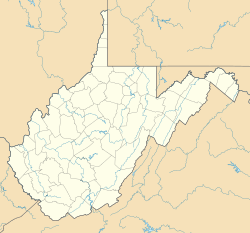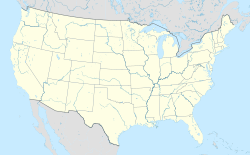Watoga, West Virginia
Watoga is a small community in Pocahontas County, West Virginia, West Virginia, United States. It's located on the east side of the Greenbrier River, about 3.5 miles (5.6 km) east-northeast of Hillsboro, West Virginia. An "unincorporated community" means it's a place where people live, but it doesn't have its own local government like a city or town.
Early History of Watoga
Quick facts for kids
Watoga, West Virginia
|
|
|---|---|
| Country | United States |
| State | West Virginia |
| County | Pocahontas |
| Elevation | 2,113 ft (644 m) |
| Time zone | UTC-5 (Eastern (EST)) |
| • Summer (DST) | UTC-4 (EDT) |
| Area code(s) | 304 & 681 |
| GNIS feature ID | 1555926 |
The town of Watoga was first built by the Watoga Lumber Company. This happened in the early 1800s. The name "Watoga" might come from a Native American language, possibly Cherokee.
This was a "company town." A company town is built by a business to house its workers. The company often provides everything, like jobs, food, medicine, and clothes. This made workers very dependent on the company.
Watoga was never a very big town. But it had its own school, a general store, and a post office. Sadly, the timber industry in the area didn't last. By the early 1900s, most of the trees in Pocahontas County had been cut down. The lumber companies closed, and the town of Watoga became empty.
The Watoga Land Association
In 1921, nine African American people from Bluefield, West Virginia started the Watoga Land Association. They were Mr. Edwin Mann, Mr. James S. Kahle, Mr. L. A. Hooper, Mr. C.A. Bradshaw, Mr. W.C. Pollock, Mrs. B.A. Alexander, Mr. E.M. McCulloch, Mr. G.W. McCulloch, and Mr. J.E. Woodson.
They wanted to create a community where African Americans could own their own land. They also wanted to govern themselves. Dr. Tyler Edward Hill helped them. He was the director of the Bureau for Negro Welfare and Statistics. This was a state agency that helped African Americans, for example, by helping them buy farms.
Dr. Hill believed that having jobs was key for African Americans to become successful and gain equality. He traveled around, asking other African Americans to join the Watoga community. He said West Virginia was making great progress in business.
The Watoga Land Association bought 10,000 acres of land in Pocahontas County. This included the old, abandoned company town of Watoga. Members of the association fixed up the empty buildings and lived there.
We don't know much about what life was like in this community. Dr. Hill didn't stay involved much after it started. The community members had to manage on their own. They tried to print a newspaper called The Associated Voice. But only a few issues were made before it stopped. They also wanted to start their own school, the Watoga People's School. However, this school never opened.
The main goal was to farm the land and become self-sufficient. But the land they bought was not good for farming. It was very hard for them to survive. By the 1930s, the Watoga Land Association ran out of money. Most residents moved away to find work.
Even though people left, some members still owned their land. But this didn't last long. In 1967, most of the land was sold to the Monongahela National Forest. A few small plots are still privately owned. But most of what was once the Watoga Land Association is now part of the forest. This includes the remains of the old company town.
The Legacy of Watoga
There isn't a lot of information about the Watoga Land Association or the town of Watoga. However, the creation of this separate African American community shows what was happening across the state and country at that time.
In the early 1900s, many African Americans moved to West Virginia. Farms in the South were failing, and people couldn't make a living. At the same time, coal mining offered many jobs. So, many unemployed Black workers from the South came to West Virginia.
In the coal mines, there was some unity among workers. But coal companies tried to limit the number of minority workers. This was to prevent miners from joining together to form unions. This strategy partly worked. For example, African American coal miners chose to work during the Battle of Blair Mountain, instead of going on strike.
This loyalty made Black miners valuable to coal companies. Companies looked for ways to keep them in West Virginia. The Bureau for Negro Welfare and Statistics suggested moving Southern Black workers to available farmland. Many miners already worked on farms when mine work was slow.
Black miners and their families also struggled to find good housing in company towns. The housing for Black miners was often worse than for white miners. Records show that maintenance requests from Black workers were often ignored. This left their homes in poor condition. These problems added to other issues in company towns. These included a lack of indoor plumbing, poor sewer systems, and little electricity.
Even though company housing slowly got better, it was rare for Black miners to afford to move out. When they did, African Americans often bought land outside of cities. They created their own "unincorporated segregated developments" on the edges of towns.
Across the United States, African Americans were also creating their own spaces. One famous example was the "Back to Africa" movement led by Marcus Garvey. But many other thinkers wanted to create safe places for African Americans. They wanted to escape the racial violence and hatred they faced. Towns like Watoga existed all over the United States. Many are no longer active communities. But the ideas they stood for still influence how we talk about race today.



